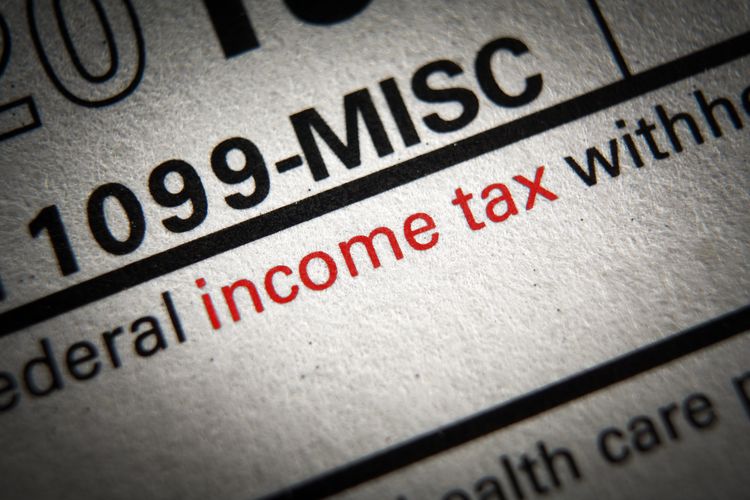What You Need To Know About Doing Your Taxes Yourself
The deadline for filing taxes has passed, and maybe you’re feeling more “Whew” than “Yahoo!” You weren’t nearly as prepared as you you hoped. Maybe you found yourself scrambling for days – even weeks – to pull everything together. And still, you have that nagging feeling that you might have missed a thing or two… or three… or four…
We’ve got some easy-to-follow steps that will help you start preparing now, and all year long, for the upcoming tax season. It’s a surefire way to help make next year’s preparation, well, less taxing.

1099, W-2, Interest Statements, Receipts, and Proof of Contributions
The type of tax documents you’ll need to file depends on your financial situation. Some of the most common documents include a 1099, a W-2, an interest statement, proof of contributions, receipts, and proof of contributions.
There are more than 15 different 1099 forms, the most common of which is the 1099-MISC, which you’ll receive from any freelance or contract client who paid you over $600 during the course of the year. Other common 1099s include Form 1099-DIV and 1099-INT, which pertain to earned interest on investments and dividends.
A W-2 indicates the amount of your annual wages as well as the amount of taxes withheld.
Interest paid on mortgages and student loans may be tax-deductible. For student loan interest payments, you’ll receive a 1098-E and a mortgage interest statement from your lender.
You’ll need to provide receipts for any deductions you take. Examples of important receipts include those for business-related expenses such as advertising, meals, education, travel expenses, etc. You’ll also want to include receipts for charitable contributions, or significant unreimbursed medical expenses (more than 7.5% of your adjusted gross income).
Keep records of any contributions to health savings accounts (HSAs) and certain retirement accounts, including 401(k)s, IRAs, and 403(b)s, which may be tax deductible and possibly qualify for a saver’s credit.

Forms
In addition to the standard 1040 filing form, you should also be aware of additional forms you might have to complete, such as a 1040-ES, a 1040-SR, and a Schedule A.
You can use this 1040-ES form to calculate and pay estimated tax on income for the current year that isn’t subject to withholding such as rental property income, dividends, and self-employment income. When it comes to a 1040-SR, seniors can easily fill out this tax form for simple financial situations. If you’re planning to itemize your tax deductions, you’ll need a Schedule A form.

Filing Status
Your tax bill – what you owe or what you get back – could be impacted by your filing status.
If you’ve never been married or you’re legally separated or divorced, you would file as a single person.
Filing separately lowers your tax burden (for example, if one spouse has significant unreimbursed medical expenses, which can be deducted only after they exceed 7.5% of your adjusted gross income), or you and your spouse decide to maintain separate finances.
If you were married before December 31 of the previous tax year, then you can marry, filing jointly. If you are unmarried with dependents living with you, the status of head of household will offer more tax advantages than filing as Single.
If your spouse has died and you have dependent children and/or other family members, you can file as a widow or widower with dependents.

Tax Deductions
You’ll want to conduct some research to find out about all of the tax deductions for which you might qualify. Some of the most common deductions and credits include:
- Child and dependent care tax credit
- Child tax credit
- Earned income credit (for low income-earners)
- Medical expenses deduction
- Student loan interest deduction
- Lifetime learning credit (for tuition costs)
- Self-employment expenses deduction
- Charitable donations credit
- Retirement plan or health savings account contribution deductions

Filing Methods: e-File /IRS Online Forms and By Hand
Regardless of which tax filing method you choose, you can rely on the IRS Interactive Tax Assistant (ITA) for suggestions, guidance, and answers to some of the most common questions taxpayers have.
The IRS e-file website enables you to make basic calculations automatically and stay organized while also lessening the possibility of making mathematical errors. The easy-to-follow instructions streamline the process, making it less cumbersome than you might have imagined.
If you feel your financial situation is somewhat complex and that filing your taxes isn’t something you want to tackle by hand, the following tax software options can help guide you through the process. These sites can also help you find potential deductions that maximize your refund.
You can complete your filing by hand by simply downloading the free forms from the IRS website and printing them out. Using this method is a good choice if your tax situation is simple and you’re comfortable working with multiple sheets of paper that need to be submitted in proper order.
